The trends in packaging production with digital printing
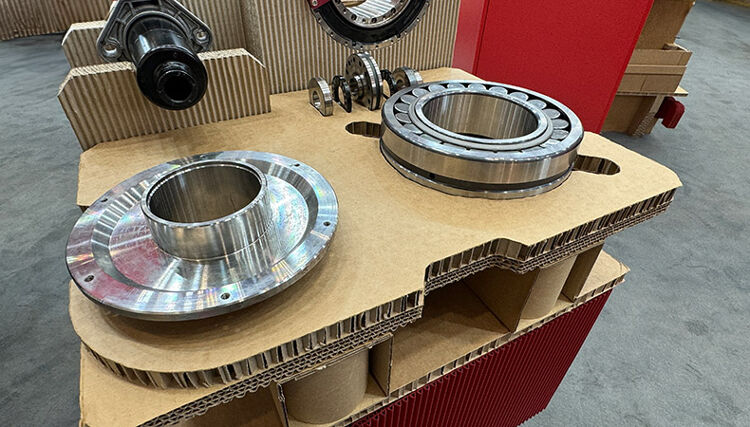
The packaging industry is growing and evolving. Sonja Angerer shares the potential future trends, the importance of environmental protection and what effect changing packaging laws has on digital printing.
Most consumers only notice packaging when they are irritated by their waste. Industry insiders, estimate that packaging has an annual turnover of approximately 370 billion euros. According to figures of the European Council, packaging is one of the important industries . Digital printing remains a key technology in packaging for some time.
 CAPTION: Today, labels are already mainly printed digitally. Image Credit: S. Angerer
CAPTION: Today, labels are already mainly printed digitally. Image Credit: S. Angerer
New regulations for the packaging industry
In recent years, the packaging industry has performed exceptionally well. However, the effects from was not received well with European legislators. This is due to the fact that within the last decade, packaging waste has increased by 25%. This is in direct contrast to the EU's goal of establishing a sustainable circular economy by 2050.
A factor that is frustrating for parliament members is the uncontrolled increase in plastic packaging waste. By 2030, plastic packaging could increase by a further 46%, as stated by the European Council in a press release in March 2024. Therefore, it is expected that the new EU Packaging Regulation PPWR will be finalised as planned in autumn 2024. It will take effect no later than 18 months after publication and stipulates, among other things, that all packaging in the EU must be recyclable by 2030.
The motion parliamentarians need to determine extended certifications and labelling requirements. It also stipulates that certain proportions of post-consumer recycled material (PCR) must be used for packaging. In addition, the rate of reusable packaging will likely increase. This is an ambitious plan for the packaging industry, with its often-enormous running lengths and even longer product cycles.
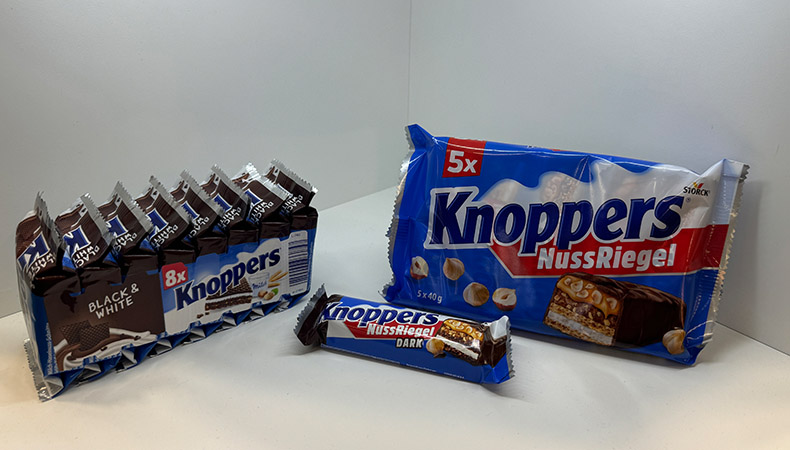 CAPTION: The new EU Packaging Regulation PPWR aims to reduce the use of single-use plastics for packaging. But is everyone aware of this? Image Credit: S. Angerer
CAPTION: The new EU Packaging Regulation PPWR aims to reduce the use of single-use plastics for packaging. But is everyone aware of this? Image Credit: S. Angerer
Less waste and more effective packaging
The European Union is not different in its plans either. Similar initiatives or existing legislation are also coming from North and South America and some Asian countries. However, government regulations will not only require packaging printing to change massively in the coming years. Consumers are also increasingly becoming less interested with packaging.
At a recent press event in Nuremberg in September 2024, Jenny Walther-Thoß, Senior Consultant, B+P Consultants GmbH, stated that consumers assume that packaging accounts for up to a third of a product's overall CO2 emissions. In fact, according to the consultant, the proportion is usually around 2% -3%. Even extremely elaborate luxury packaging accounts for a little more than 10% of the overall product's environmental footprint.
Consumers are also not particularly consistent in their rejection of packaging. After all, the demand for personalised and individualised packaging options is still growing tremendously, as with online shopping, unboxing is increasingly replacing the shopping experience at the POS.
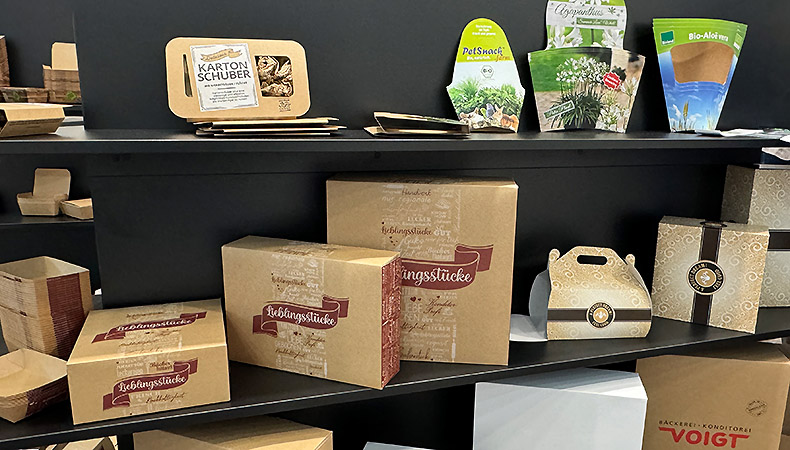 CAPTION: Soon even more packaging will be made just from paper. Image Credit: S. Angerer
CAPTION: Soon even more packaging will be made just from paper. Image Credit: S. Angerer
The impact of packaging trends on digital printing
At events and trade fairs, it is obvious that the packaging industry is making a lot of effort to stop wasting precious resources, relying on automation and digitalisation. Filling, packaging and logistics gets combined in a single, efficient workflow.
The packaging industry is also embracing digitalisation. ERP and management software facilitates just-in-time production and helps to set up and monitor efficient reusable packaging. For printers, this is good news.
Although analogue printing has become more flexible in recent years, it still cannot compete with digital printing in terms of versatility and speed. Important trends such as personalisation and regionalisation have led to packaging for consumer goods being printed in lots of different varieties and languages. The competitive advantage of analogue printing for very long run-lengths is therefore becoming redundant.
Very soon, packaging will be predominantly made of cardboard and paper, as this allows for renewable resources. Also, there are already well-established collecting and recycling facilities for paper-based waste in the European Union and elsewhere, making it easier to achieve recycling quotas.
For digital printing, this "paperisation" is both a blessing and a curse. Large manufacturers such as HP, Durst or EFI have had high-performance machinery for packaging printing on corrugated board on offer for a while. Many wide format printers for signage will no longer suitable for most packaging printing, if legislation is tightened even further, as inks and substrates are commonly not yet certified for food and primary packaging.
Also, many digital printing inks cannot currently be separated from the fibre in existing recycling plants for paper waste. For effective deinking and high-quality recycling of paper and films, it is necessary that ink, substrate and machine manufacturers, and also printers and their customers join forces.
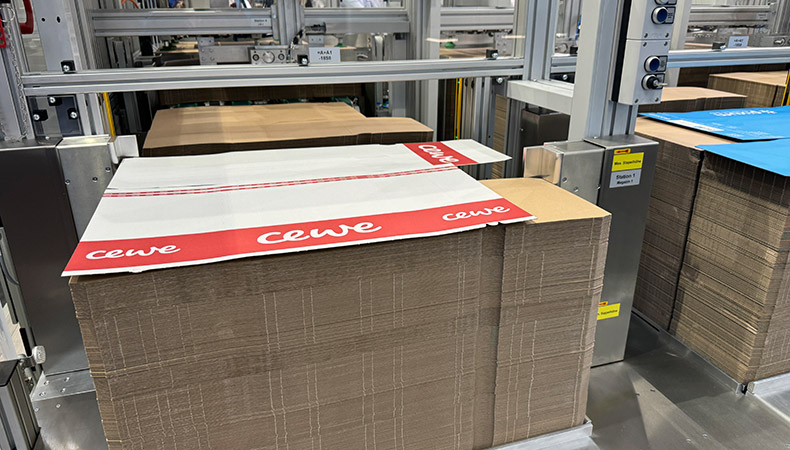 CAPTION: The "paperisation" trend in packaging will also affect printers. Image Credit: S. Angerer
CAPTION: The "paperisation" trend in packaging will also affect printers. Image Credit: S. Angerer
How can print shops benefit from current trends in packaging printing?
Digital printing of labels as well as paper and corrugated packaging are expected to boom because of the new EU Packaging Regulation PPWR and similar legislation in other parts of the world.
This is also likely to increase the demand for digital cutting tables, for example from Zünd, Kongsberg or Bullmer, and cutting services. In the future, many products will no longer be stored in plastic trays, but in moulds cut from unprinted cardboard.
However, the stricter environmental protection and reporting obligations along the entire supply chain also pose quite some challenges for printers, as it is no longer enough to refer to technological advantages alone, such as lower material and power consumption compared to analogue printing, to be classified as environmentally friendly.
Manufacturers of consumer goods and packaging materials are already striving to build efficient, digitised and integrated workflows. Therefore, printers will therefore have to adapt their product range, possibly even their whole production to benefit from the significant changes within the packaging industry and to establish themselves or remain to be considered reliable partners to the industry.
If printers cannot adapt, it seems quite likely that large manufacturers of consumer goods will increasingly integrate packaging printing into their own production lines and refrain from purchasing packaging prints externally altogether.
To discover the latest content that covers a wide range of sectors including packaging and digital printing sign up for FESPA’s free monthly newsletter FESPA World available in English, Spanish and German.
Interested in joining our community?
Enquire today about joining your local FESPA Association or FESPA Direct
Recent news
.png?width=550)
Why are FESPA events the ideal place for visionaries to meet? With Harold Klaren from EFKA
We speak to Harold Klaren, International Sales Manager at EFKA about visionaries in print. Harold shares why he believes FESPA events are the ideal place for visionareis to meet.
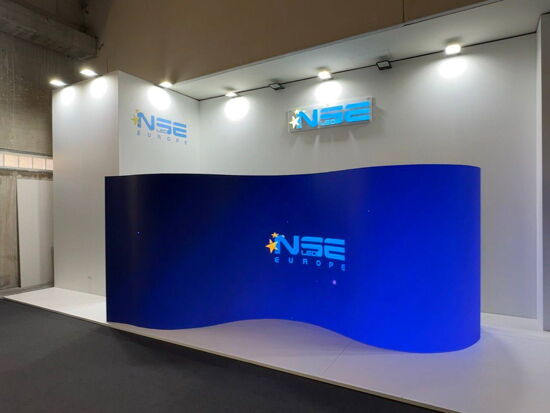
NSELED to showcase Innovation and transformation at European Sign Expo 2025
NSELED Europe, part of leading LED display technology provider NSE, will welcome visitors to its stand at the European Sign Expo 2025. Ahead of the event, we speak with Daniele Rocca, principal chief executive officer at NSELED Europe, about what to expect from the company as the official ‘Digital Screen Partner’ of the event.

Why the Future of Print Is Personal – and What That Means for Your Business
Minna Philipson, CMO at Gelato shares how the future of print is personal, driven by demands for tailored, localised, and on-demand products. Businesses must adapt, embracing software to streamline operations and building customer-centric brands. Personalisation is key to connection, requiring emotional storytelling and flexible operations to thrive in the evolving market.
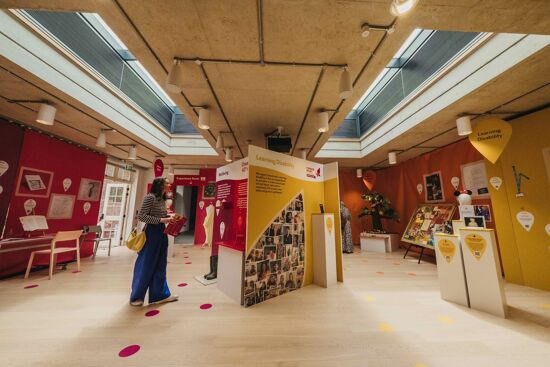
The latest sustainable solutions in non-digital signage
While by no means a new concept in the market, sustainability is becoming an increasingly important part of daily life for sign-making businesses. Here, Rob Fletcher shares some of the non-digital materials to help companies become more planet friendly.